CONGRESS REVIEW
11th Congress of the European Academy of Neurology
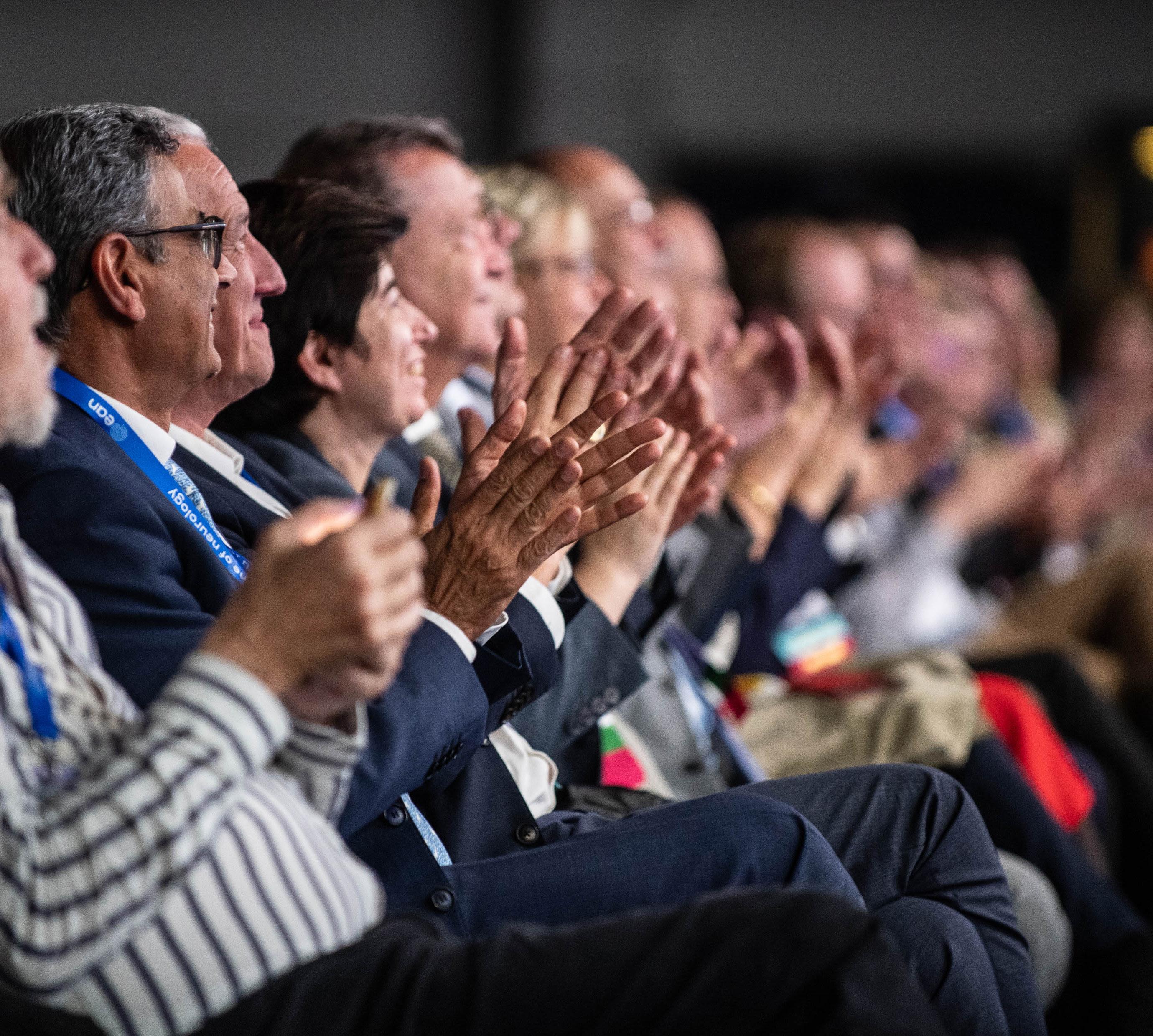
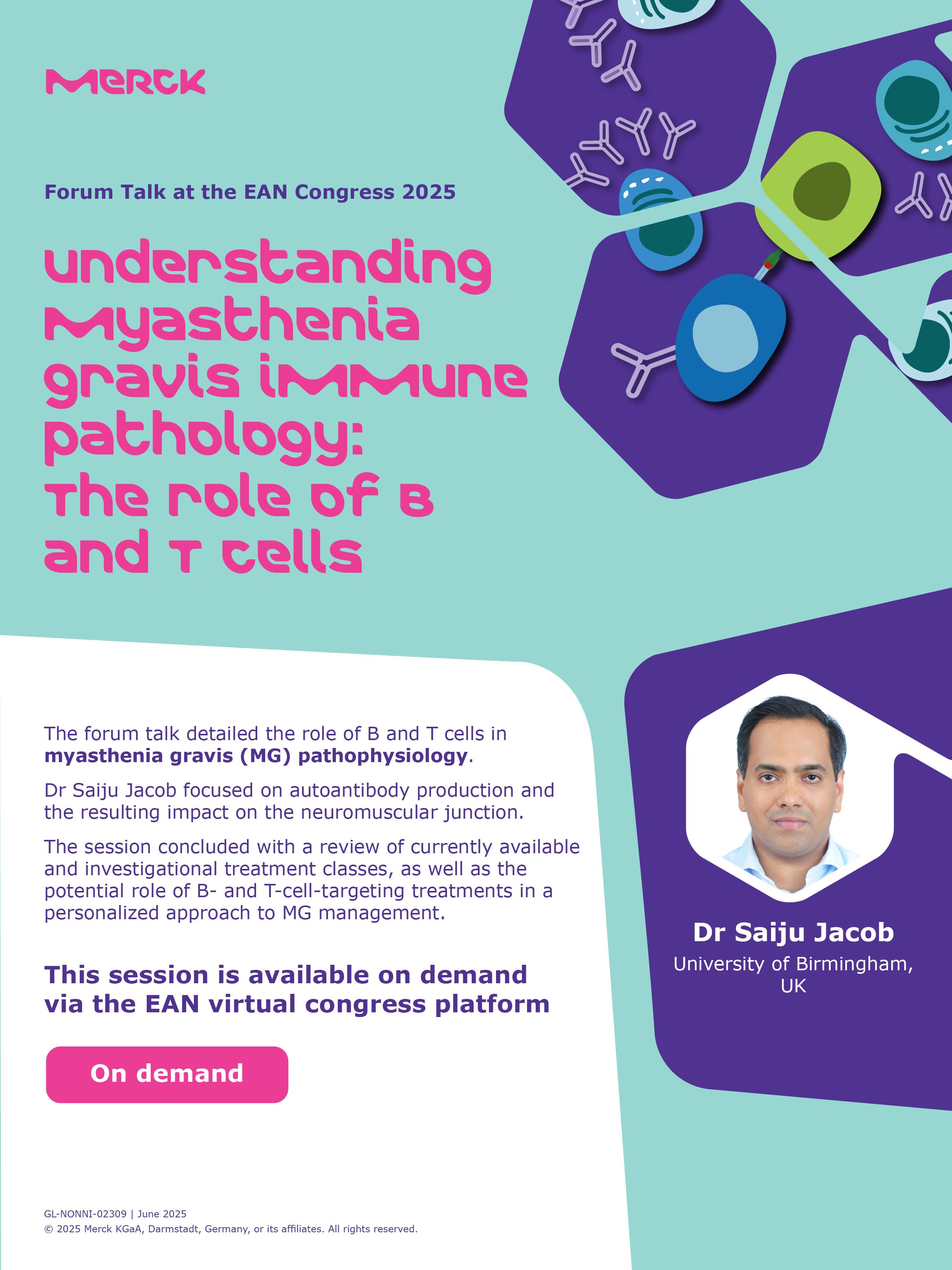
Opening Session
Presidential Symposium
Public Brain Health Day
Breakthroughs in Treatment Neurology
EAN TV
Overarching theme
Photo Gallery
Highlights & Breaking News
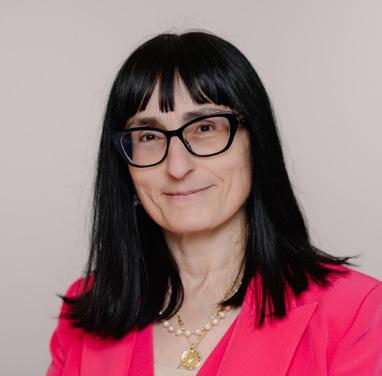



Opening Session
Presidential Symposium
Public Brain Health Day
Breakthroughs in Treatment Neurology
EAN TV
Overarching theme
Photo Gallery
Highlights & Breaking News

The 11th Congress of the European Academy of Neurology, which took place in Helsinki, Finland, on 21–24 June, was a huge success. The enormous amount of work contributed by so many – from the very first plans to the final sessions – culminated in an insightful, lively, and diverse event that ranks among the most popular EAN congresses so far. Over four days, filled with groundbreaking research, excellent educational sessions, engaging discussions, industry buzz, and lively networking opportunities, we experienced many memorable moments at a modern, intimate congress venue in a charming and hospitable city; a setting that – for the second consecutive congress – reinforced the sense of being at the “home of neurology.”
With 6,383 attendees onsite, the Messukeskus congress centre was alive with activity, hosting 405 invited speakers and the presenters of 2,152 accepted abstracts . Together, they delivered a rich and wide-ranging congress programme that spanned all neurology subspecialties and supported participants at every stage of their careers. Spanning 2,594 m² and showcasing 90 exhibitors , our exhibition offered participants an ideal opportunity to explore the latest innovations in neurological products and services and connect with industry partners, as well as many non-profit medical organisations in our dedicated Neurohood area.
Thank you to everyone who took part in the EAN Congress 2025. Whether you were a speaker, an abstract author, one of our 8,289 registered onsite or virtual participants , a patient advocate, an industry representative, a staff member, or contributed in any other capacity – you helped to make this another outstanding congress for the EAN.
In this congress review, we offer you the chance to look back at some of the highlights of this brilliant congress, including facts, figures, photos, and videos from Europe’s premier neurology meeting. European and non-European neurologists have shown their amazing strength, passion, and cooperation in reducing the burden of neurological disorders through belonging to the vibrant EAN community. The EAN board and myself have been inspired by you and we are very proud of this community.
Thank you again and see you next year in Geneva!
Industry Thanks
Elena Moro EAN President
The 11th Congress of the European Academy of Neurology (EAN) got officially underway in Helsinki with the Opening Session, a vibrant gathering underscoring the academy’s growing global impact and the vitality of neurological research.

EAN President Prof. Elena Moro opened the session by welcoming 6,383 in-person participants and 1,906 online attendees from 113 countries to this year’s congress. She then presented a bold four-year strategic plan aimed at strengthening neurology’s reach and influence across Europe. Centred on five pillars – communication, advocacy, education, membership, and research – the plan outlines a comprehensive roadmap to enhance patient care, scientific collaboration, and professional development.
Moro emphasised the collective strength of the EAN, which represents more than 45,000 neurologists across 48 national societies, while acknowledging persistent challenges including workforce shortages, unequal access to therapies, and the rapid integration of technologies like AI.
Structuring and optimising care delivery to patients
To tackle these issues, Prof. Moro introduced seven strategic priorities:
Reinforcing general neurology and developing Centres of Excellence
Integrating AI technologies into practice
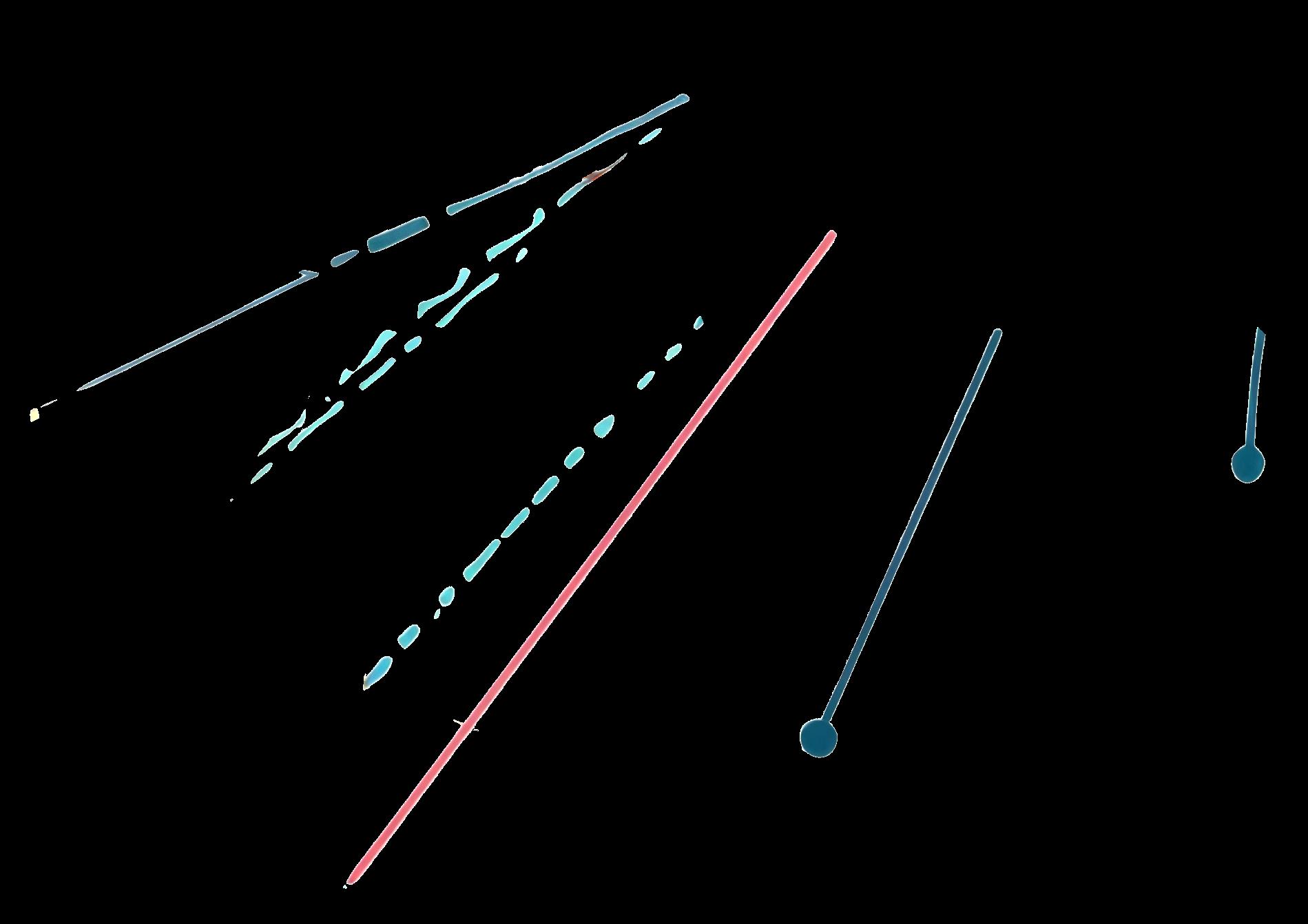
Promoting and cutting-edge research innovation

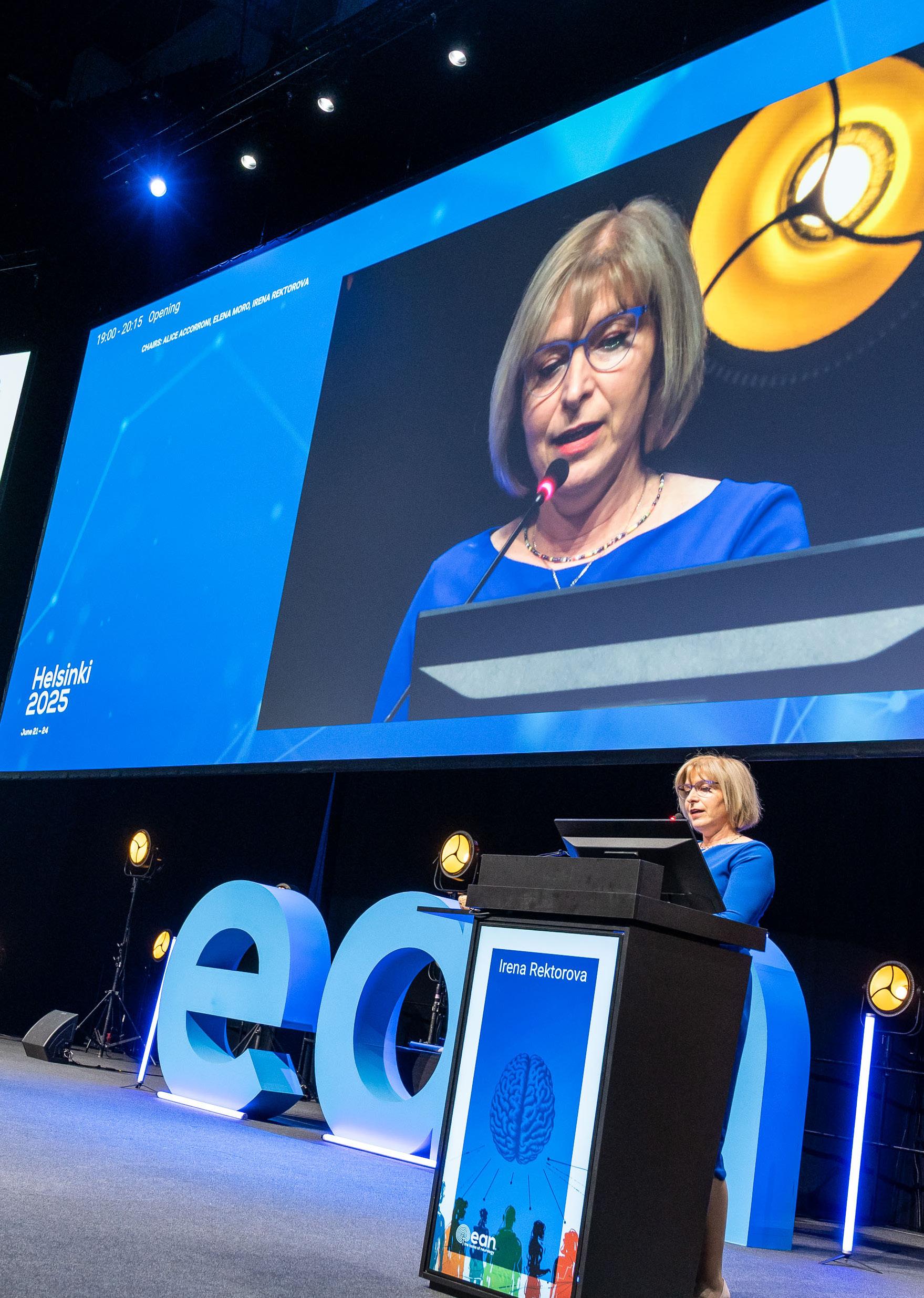

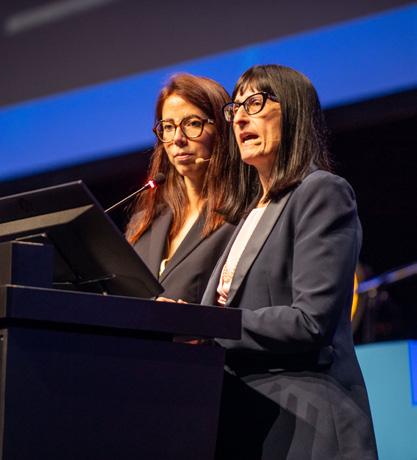

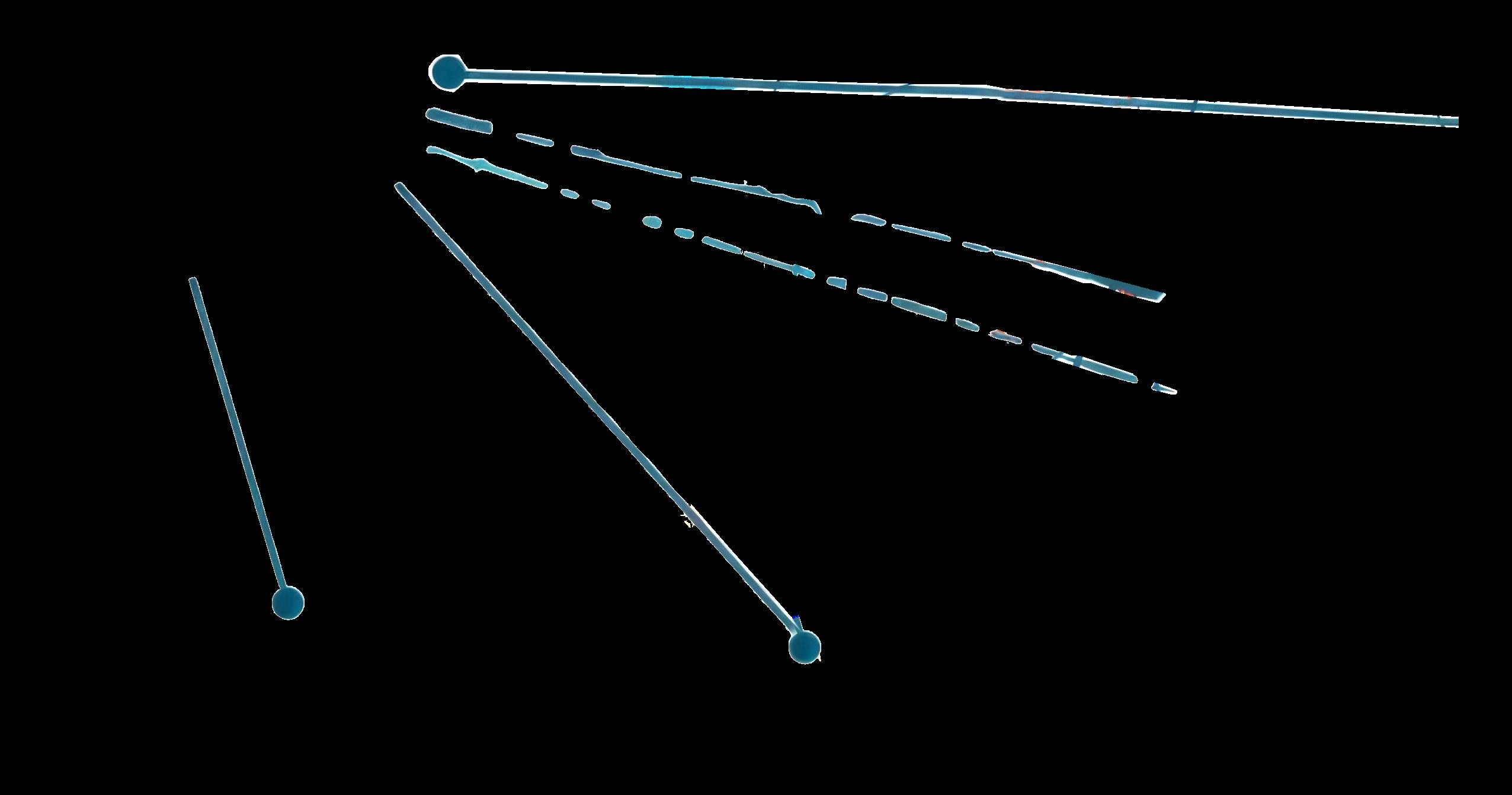


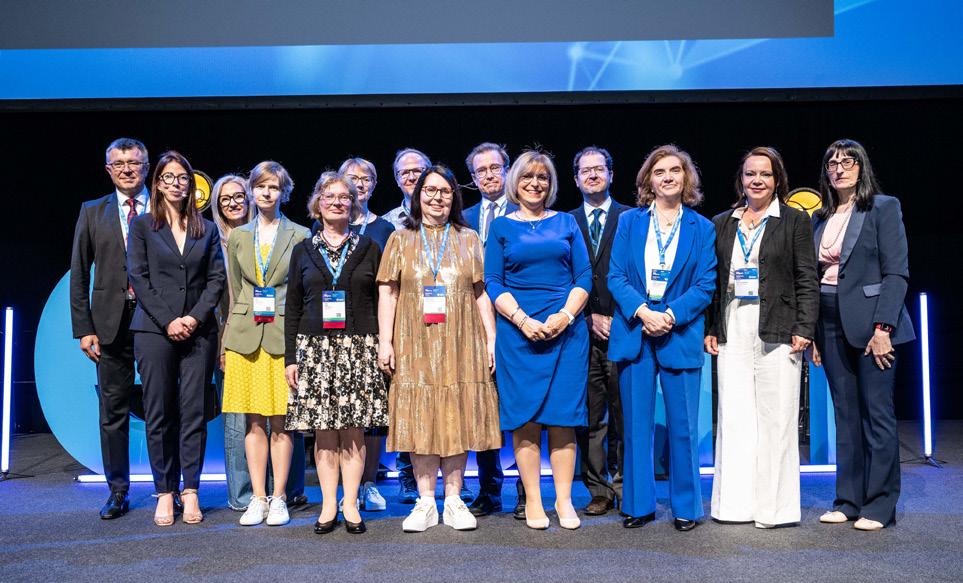
In a landmark decision, Moro revealed that the Residents & Research Fellows Section (RRFS) representative will now hold a full seat on the EAN Board –amplifying the voice of early-career neurologists in strategic decision-making.
Former RRFS Chair Alice Accorroni took to the stage to present the section’s expanded activities, supporting over 2,000 young neurologists through hospital visits, skill sessions, talks, and workshops. She highlighted the launch of the EAN Certificate in Clinical Research in Neurology , a two-year programme aimed at training young clinicians in essential research skills.
A major announcement was the launch of the EAN Scientific & Coordinating Panel Yearbook project, a collaborative effort involving 32 expert panels and over 37,000 members to synthesize current research trends.
Claudia Sommer was also formally announced as the new Editor-in-Chief of the European Journal of Neurology, the academy’s official journal.
Education remains a central pillar of the EAN’s mission. In 2024, over 5,000 members from 125 countries received grants to attend educational events. This year’s congress features 55 educational sessions with 200 speakers, while the eanCampus continues to deliver highquality online learning.
Two key initiatives were also highlighted: the Artificial Intelligence in Clinical Neurology Task Force to ensure ethical implementation of AI, and the Neurologists’ Wellbeing Task Force to address mental health and burnout among professionals.
The EAN’s advocacy efforts were highlighted through its work with the European Brain Council and collaborations with EU institutions, the United Nations, and G7 policymakers. Moro showcased public initiatives including the Brain Health School Challenge and the first ever Public Brain Health Day during the Helsinki congress – encouraging citizen engagement in brain health.

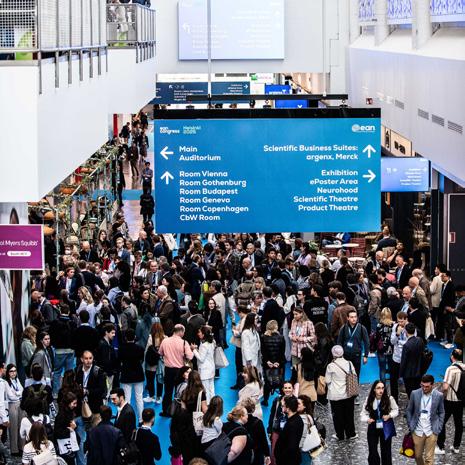
The session continued with an inspiring keynote by Prof. John Hardy, a trailblazer in neurodegenerative disease research, who shared groundbreaking work on Alzheimer’s and Parkinson’s, including the emerging use of blood biomarkers for early detection.
The ceremony also featured the presentation of Honorary Membership of the EAN to two highly distinguished neurologists, Anna Członkowska and Ivan Rektor, for their lifetime achievements and service to world and European neurology.
The session was completed with a live Finnish music performance, celebrating Helsinki’s designation as the 2025 European Capital of Brain Health.
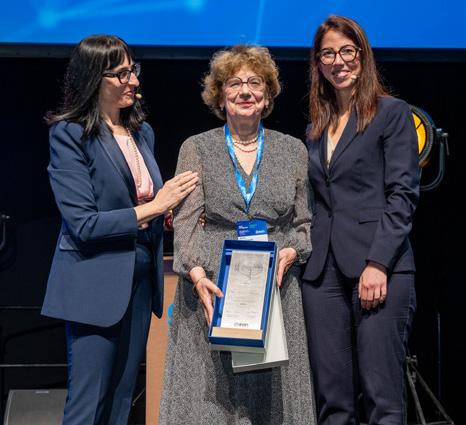
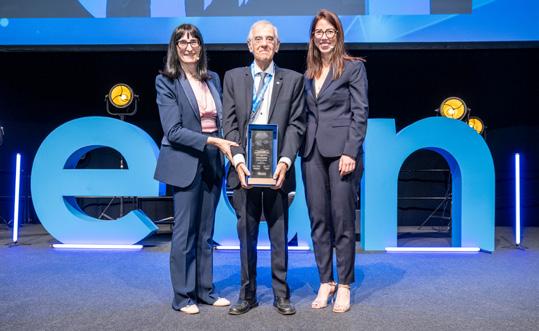


The Brain Prize Lecture: understanding how the brain represents the world
Kicking off the session, Prof. Haim Sompolinsky, recipient of the prestigious Brain Prize 2024 from the Lundbeck Foundation, presented a lecture on the foundations of theoretical neuroscience, offering insights into how the brain maintains stability between the constant influx of sensory stimuli and its neural dynamics to shape cognition, perception, memory and creativity. He explained how these internal-external interactions allow the brain to generate hypotheses about reality, create memories and make predictions – while also shedding light on neurological disorders and the mechanisms of compensation in disease states.
Watch this Session on our virtual congress platform*
Right: (from left to right) EAN President-Elect, Kailash Bhatia; Charles-Édouard Brown-Sequard Award Lecturer, Claudio Bassetti; Moritz Romberg Award Lecturer, Marina A.J. de Koning-Tijssen; Camillo Golgi Award Lecturer, Maria Grazia Spillantini; Anita Harding Award Lecturer, Catherine Lubetzki; EAN President, Elena Moro.
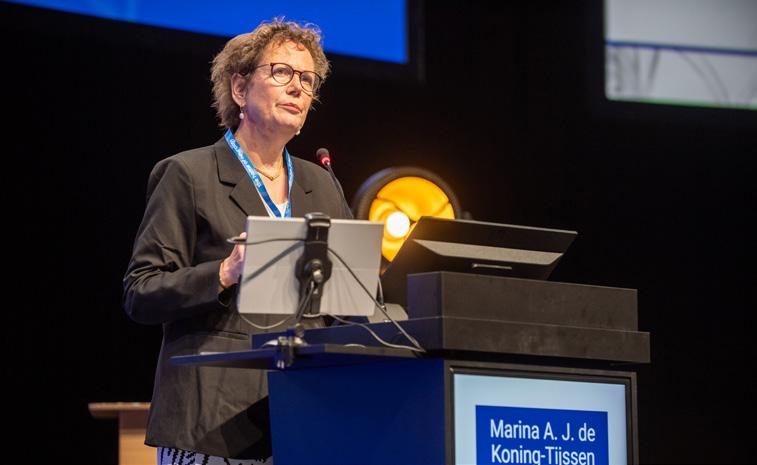


If we accept that sleep comes from a normal brain, then we have to assume that sleep disturbances may become a window of understanding the appearance of neurological disorders
its
Prof. Maria Grazia Spillantini delivered the prestigious Camillo Golgi Award Lecture, focusing on the role of protein aggregation in the pathogenesis of neurodegenerative diseases such as Alzheimer’s and Parkinson’s disease.
Spillantini looked back at her pioneering work in identifying tau protein isoforms and their role in disease-specific aggregation patterns – contrasting the six isoform inclusions in Alzheimer’s with selective patterns in other diseases.
Anita Harding Award Lecture: multiple sclerosis, from basic science to clinical translation – a focus on nodes of Ranvier and electrical activity
Prof. Catherine Lubetzki, the inaugural recipient of the Anita Harding Award – created to honour women leaders in neurology – delivered an engaging lecture connecting her cutting-edge research on multiple sclerosis (MS) with clinical practice. She highlighted recent discoveries about the role of prenodes in the formation of nodes of Ranvier and how electrical signals can guide remyelination processes – opening new therapeutic avenues for MS. Her findings also underscore the relationship between neurons, microglia and the myelination process, with promising implications for restoring function in demyelinating diseases.
Brown-Séquard Award Lecture: sleep by the brain, for the brain; implications for neurology
Sleep expert Prof. Claudio Bassetti gave a comprehensive overview of how sleep serves both fundamental and restorative functions for brain health during the Charles-Edouard Brown-Séquard Award Lecture. He outlined how sleep regulates energy conservation, protein synthesis, brain clearance, synaptic plasticity, motor learning and behaviour – arguing that disturbances in these mechanisms can be among the first signs of neurological disease.
Bassetti emphasised that sleep-wake disruptions are frequently observed across neurological conditions highlighting the importance of integrating sleep assessment and management into neurological care.
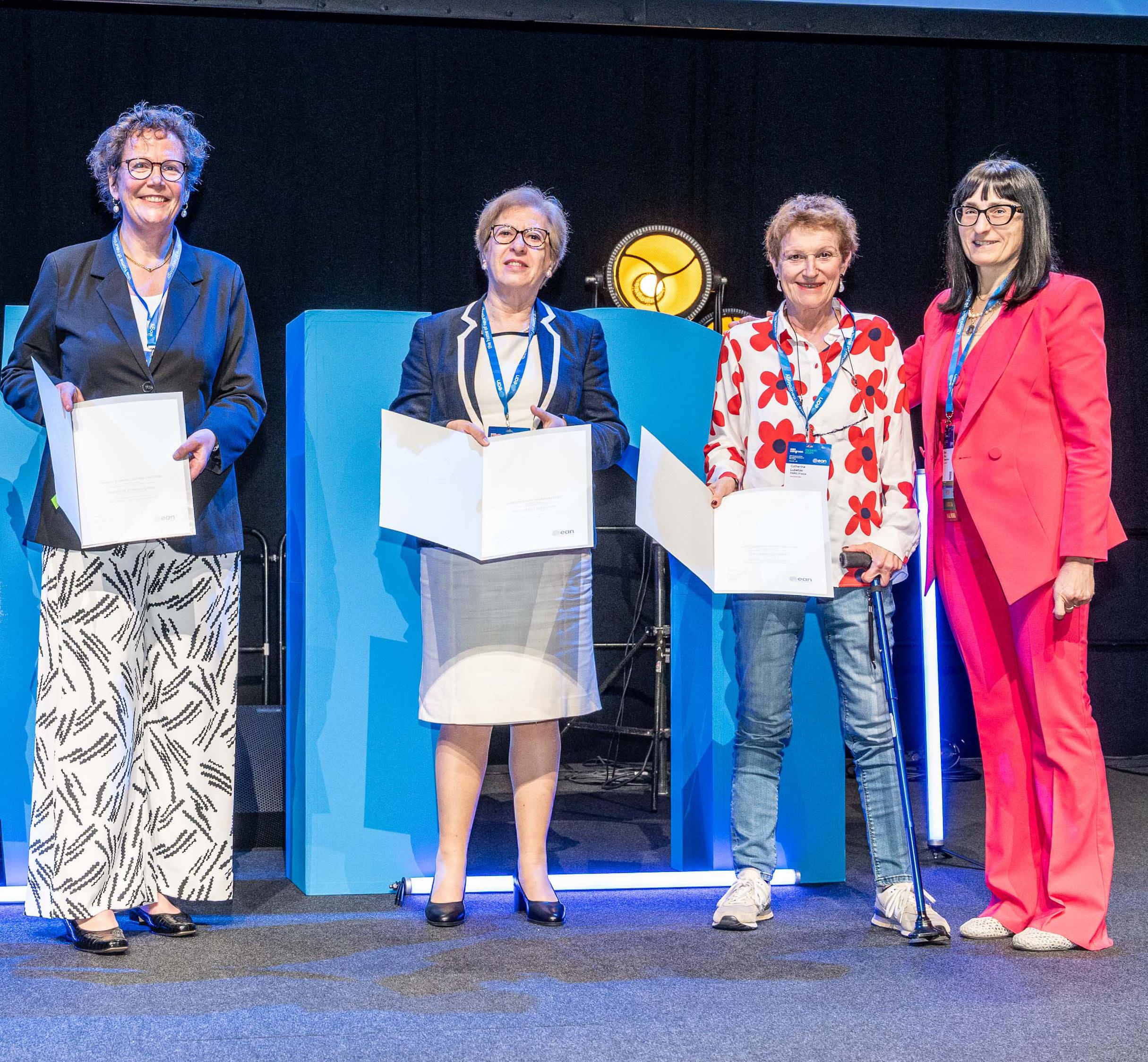
Romberg Award Lecture: myoclonus, you need to know it to see it
The session concluded with Prof. Marina de KoningTijssen, recipient of the Moritz Romberg Award, who shed light on the often-overlooked world of myoclonus, a jerky movement disorder frequently misdiagnosed in clinical practice.
She outlined the various subtypes of myoclonus based on their origin – cortical, subcortical, spinal or peripheral – and how precise diagnosis can guide treatment decisions. With a prevalence of 8.6 per 10,000 people, myoclonus remains underrecognised, particularly among older populations where co-occurrence with other movement disorders is common. Her talk underscored the need for better clinician awareness and diagnostic skills to improve outcomes in these complex cases.
Between the scientific lectures, the audience was delighted by a magic show celebrating the power of imagination, underscoring the importance of creativity in science. As the 2025 Presidential Symposium demonstrated, the future of neurology depends on uniting theoretical insights, translational research and clinical excellence – and the EAN remains at the forefront of this transformation.

We have a new group of protein aggregates that are in everybody and they are age dependent so we really need to understand if they affect any functions

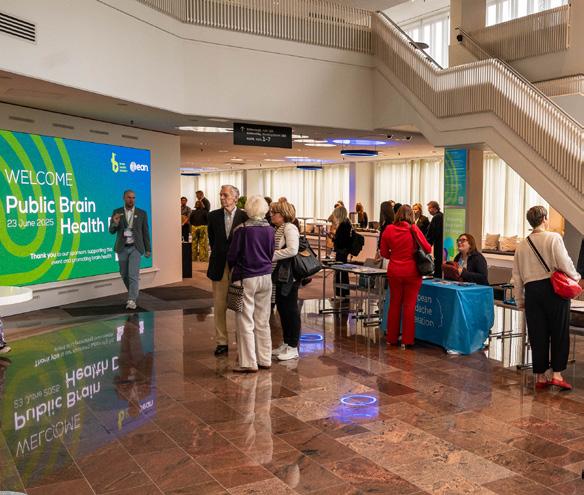



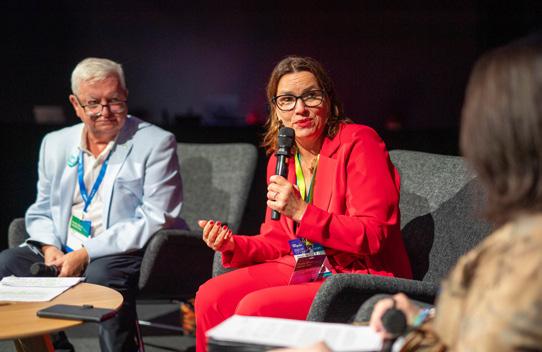



On 23 June 2025, the European Academy of Neurology (EAN) and the Brain Health Mission welcomed a diverse audience of citizens, patients, carers, educators, professionals and advocates to the Public Brain Health Day in Helsinki. Moderated by Reetta Kälviäinen, the event aimed to raise awareness, share practical tools and foster collaboration to promote better brain health for everyone, at every stage of life.
Kicking off the programme, Antoinette Maassen van den Brink, President of the European Headache Federation , and Patrick Little, President of the European Migraine and Headache Alliance , challenged common misconceptions around migraine. “Migraine isn’t just a headache,” stressed Maassen van den Brink, noting how deeply it can impact daily life – particularly for women, where hormonal factors are both under-researched and undertreated. Little underlined the massive burden migraine places not only on individuals but also on societies as a whole. Both speakers advocated for better education, early intervention and a strong role for people with lived experience in driving change.
Eino Solje of the University of Eastern Finland and Katariina Suomu, Executive Director of the Alzheimer Society of Finland , then explored how memory disorders emerge, are diagnosed and can be better managed. Solje emphasised the importance of early detection, years before symptoms fully manifest, and the need to normalise proactive brain health checks. Suomu spoke about the emotional toll of Alzheimer’s on patients and caregivers and how receiving the right information at the right time can make a life-changing difference. Both speakers stressed that nearly 40 % of dementia risk could be mitigated by lifestyle interventions, while reminding that public health efforts lag behind compared to other disease areas.
Anne Takamäki, Chair of the Finnish Society for Music Therapy, led an engaging session demonstrating how music can be used as an evidence-based rehabilitation method. From managing trauma to supporting communication and mood regulation, music therapy was shown to benefit people of all ages and neurological conditions. Participants clapped, tapped and drummed on tables as they experienced the influence of rhythm and melody in promoting well-being. Music therapy, accessible even without musical skill, combines movement, expression and joy - demonstrating how simple tools can improve brain health in everyday life.
Parkinson’s disease & movement disorders: personalised care and prevention
In a session on Parkinson’s disease (PD), EAN President-Elect Kailash Bhatia and Amelia Hursey of Parkinson’s Europe discussed known and emerging risk factors, from environmental exposure to gut-brain axis dynamics. While ageing remains the most recognised risk, Bhatia noted that genetic predisposition and changes in the microbiome are being investigated. He highlighted the SEANS model - Sleep well, Exercise, Avoid injury, Nutrition, and Social activity - as a framework for prevention. Hursey also stressed the importance of multidisciplinary care teams to support the quality of life of people with PD.
The influence of autogenic training on brain health: relaxation for brain resilience
In a calming and engaging session, Prof. Max Josef Hilz, Past-Chair of the EAN Scientific Panel Autonomic Nervous System Disorders introduced the audience to autogenic training – a relaxation technique using self-suggestion to restore balance between the sympathetic and parasympathetic nervous systems. Participants joined in a guided session, in which they listened to phrases intended to evoke warmth, calmness and focus.
Hilz explained how such methods could counteract chronic stress, a major contributor to neurological and systemic health issues.
Throughout the evening, attendees engaged with each other, exchanging ideas and learning about ongoing projects. A closing reception provided an opportunity for participants to reflect on advancing brain health for all.
The Public Brain Health Day demonstrated the power of accessible science, lived experience and open dialogue. As Helsinki continues its role as the EU Capital of Brain Health in 2025, the success of this event will serve as a blueprint for others to follow, ensuring that brain health remains at the forefront of public and political agendas.
A special thank you to our sponsors, AbbVie and Roche, for supporting the Public Brain Health Day and promoting brain health.


EAN 2025 introduced a new session format highlighting the latest breakthroughs in neurological disease treatment, focusing on the most impactful studies and clinical trials published between January 2024 and January 2025. These sessions showcased groundbreaking advancements in disease-modifying therapies, novel treatments, and preventative strategies that have the potential to transform patient care.
EAN Programme Committee Chair, Prof. Irena Rektorová led this first ever Breakthroughs in Treatment Neurology special session, presenting the results of impactful clinical trials ranging from rare neuromuscular and infectious diseases to highly prevalent conditions such as migraine.
Prof. Lea Grote-Levi began by presenting trial results on DIAVIS-T therapy for treating progressive multifocal laukoencephalopathy, a rare, fastprogressing neurological disease in immunosuppressed patients. The therapy uses donor-derived, virus-specific T cells and significantly slowed disease progression in 79 % of cases – a milestone never previously achieved in managing PML.
EAN Secretary General, Prof. Antonio Toscano followed, sharing trial results on an add-on therapy for late-onset Pompe disease. Combining Miglustat with standard cipaglucosidase alfa treatment led to improved motor and respiratory function, outperforming cipaglucosidase alone, offering new hope for managing the muscular symptoms of this genetic glicogen storage disorder.
Next, Prof. Messoud Ashina presented pituitary adenylate cyclase- activating polypeptide (PACAP) as a therapeutic target for migraine, citing studies where PACAP infusion triggered migraines in healthy volunteers. He shared trial results on Lu AG09222, a humanised monoclonal antibody against PACAP, which significantly reduced migraine frequency and reliance on acute medications.
Prof. Marianne de Visser then discussed the potential of chimeric antigen receptor T-cell therapy cell therapy (CAR-T) for treating inclusion body myositis (IBM). Case reports showed
encouraging responses in patients resistant to standard treatments. However, she stressed the need for caution due to limited data on side effects and long-term outcomes, urging further research before broader clinical use.
Dr Laura Papetti presented data on Ocrelizumab for paediatric multiple sclerosis. In an open-label trial with 23 children, the anti-CD20 antibody reduced clinical and radiological relapses, improved disability scores, and showed an acceptable rate of manageable, reversible serious adverse events, highlighting its potential as an effective treatment option.
Finally, Prof. Michelangelo Mancuso presented positive results from a trial testing the use of elamipretide, a synthetic mitochondrial peptide, for the treatment of patients with primary mitochondrial myopathies of nuclear origin. A phase III trial showed significant clinical improvements after Emilapretide treatment in a subgroup of patients, particularly those carrying specific pathogenic nuclear DNA mutations, suggesting a disease-modifying effect.

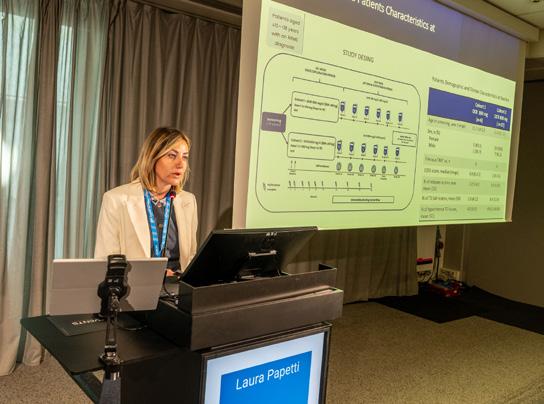
Watch this Session on our virtual congress platform*

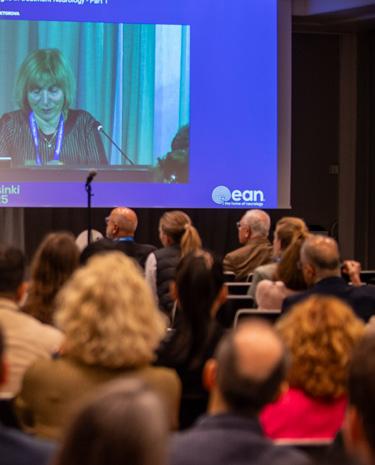

Prof. Lea Grote-Levi presents promising trial results on DIAVIS- T therapy for treating progressive multifocal laukoencephalopathy
The second part of the Breakthroughs in Treatment Neurology series at the EAN Congress 2025, chaired by Prof. Cristian Falup-Pecurariu, offered a vivid look into the present and future of neurology –highlighting treatments that are not only breaking scientific ground, but redefining care pathways.
Prof. Matilde Bruno kicked off the session, presenting lecanemab, the first approved disease-modifying therapy for early Alzheimer’s. She highlighted its confirmed ability to slow cognitive decline and explored its broader impact on clinical practice, including diagnostic, safety, and access challenges. Bruno emphasised that lecanemab signals a new era, urging healthcare systems to evolve with advancing therapies.
*To view this video content you will need to sign into your myEAN account
Next, Prof. Eugen Trinka introduced REST – Rapid and Early Seizure Termination – as a new model for managing seizure emergencies. Presenting data on intranasal seletracetam in reading epilepsy, he emphasised early intervention to prevent neuronal injury and highlighted the need for faster-acting, non-sedating rescue treatments. REST represents a proactive, modern approach to acute seizure care.
Prof. Michael Strupp followed, presenting data on N-Acetyl-L-Leucine (Aqneursa) for rare neurodegenerative diseases like Niemann-Pick type C and GM2 gangliosidoses. With a good safety profile, it shows both symptomatic relief and long-term stabilisation. Strupp highlighted its unique mechanism – supporting neuronal energy metabolism and membrane stability – tracing its evolution from early observations in cerebellar ataxia to a potential breakthrough therapy.
Prof. Wolfgang H. Oertel then shared long-term case reports of Acetyl-DL-leucine use in REM sleep behaviour disorder, showing symptom improvement, restored striatal dopamine-transporter binding, and stabilised brain metabolism over three years. These findings suggest potential disease-modifying effects, especially in prodromal stages of synucleinopathies such as Parkinson’s disease.
Prof. Jeremias Motte presented striking results on CD19-targeted CAR T cell therapy in treatment-resistant autoimmune neuropathies. Two patients –one with CIDP and one with paranodopathy – achieved sustained remission post-infusion. These outcomes suggest that targeted cellular immunotherapy may offer a breakthrough in resetting autoimmunity for severe peripheral nerve disorders unresponsive to standard therapies.
Finally, Prof. Henry Houlden highlighted groundbreaking genome-wide association studies (GWAS) findings on Parkinson’s disease in African populations, revealing novel risk variants absent in European data. Emphasising that diverse population genomics is essential, not optional, he outlined a roadmap for inclusive precision neurology through local partnerships, training, and longread sequencing – paving the way for truly global neurological research. Watch this Session on our virtual congress platform*

“We have to have a broader pictureand more interaction with our colleagues in other disciplines”
Elena Moro, EAN President

Watch the EAN TV Sessions on the EAN Vimeo channel by clicking on the TVs!
In the first EA N TV session of EA N 2025, titled RR FS: Neurology of the Future, a panel of speakers including EA N President, Elena Moro, and representatives from the EA N Residents & Research Fellows Section ( RR FS), talked about how innovation, new technology, and artificial intelligence are helping improve neurological care. They highlighted the important role of the European Academy of Neurology (EA N) and other societies in supporting these changes. The session also focused on how residents and research fellows play a key role in this progress – through their work in research, strong communication skills, and teamwork with other specialties – showing how vital they are for the future of neurology.
“There is new wind in the sails that are now also being pushed from a political level”
Frédéric Destrebecq, EBC Executive Director
This EAN TV Studio session, hosted by the European Brain Council (EBC), highlighted the vision behind the upcoming European Partnership for Brain Health, set to launch in January 2026. The Partnership aims to create a coordinated research and innovation framework to tackle the immense burden of brain disorders in Europe.
Ulrike Bußhoff, Coordinator of the CSA BrainHealth, Catherine Marquer from the French National Research Agency and Frédéric Destrebecq from EBC discussed the aims of the Partnership and the Strategic Research and Innovation Agenda, which outlines strategic priorities and main lines of action.
At EAN 2025, EAN TV once again provided a platform for our Special Sessions to reach an audience beyond registered congress participants. Taking place in our purpose-built TV studio onsite in Helsinki and streamed live on the EAN 2025 congress website, these sessions welcomed various EAN partners and friends to discuss a wide range of topics of special interest. We present just a few of them on these pages, but you can find the whole selection – including our daily Morning Show and final Farewell Show – in our EAN TV 2025 Vimeo Showcase. No login necessary!

“In many of these low and middle-income countries, there are hardly any neurological structures”
Wolfgang Grisold, WFN President

This EAN TV Studio session brought together the Presidents of the World Federation of Neurology, American Academy of Neurology and European Academy of Neurology, to shed light on the urgent need to address widening disparities in neurological care and stress the importance of joint action to elevate neurology on the global health agenda.
The discussion offered crucial insights into regional approaches to policy, advocacy and access to care, while emphasising that only a coordinated international effort can effectively tackle the rising burden of neurological disorders worldwide.
“We did see this coming; we just didn’t see the abruptness”
Lawrence Tucker, President, African Academy of Neurology
The latest EAN-AFAN TV session probed Africa’s brain-health crisis after January’s US order that froze USAID and PEPFAR, leaving 10,000 health workers idle and halting HIV and TB services. Speakers warned that countries like Mozambique remain highly dependent, while others, such as South Africa, show a path to greater self-reliance. Politicians may applaud the funding rethink, but patients feel the immediate pain. Experts urged G20-level advocacy, trans-societal alliances and diversified funding to protect both infectious-disease gains and rising NC D priorities such as stroke and epilepsy.
This fantastic symposium at the EAN Congress 2025, chaired by Prof. Elinor Ben-Menachem and Prof. Maurizio Paciaroni, explored the interactions between neurology and society.
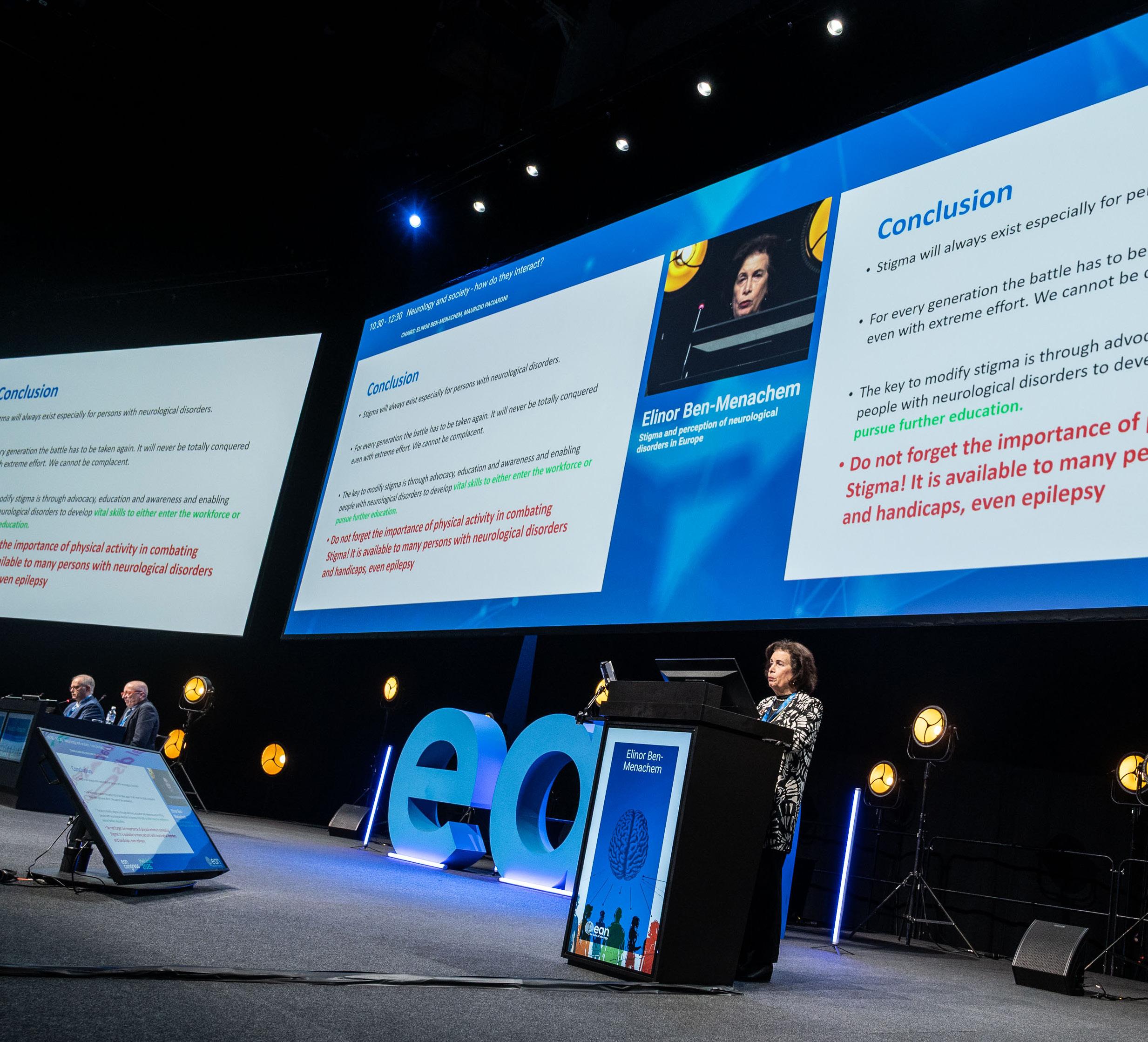
In the first part, Ben-Menachem from Sweden offered brilliant insights into the themes of stigma and the perception of neurological disorders in Europe. She emphasised that stigma is considered by the World Health Organisation to be a major cause of discrimination and exclusion, as it can lead to social isolation, low self-esteem, reduced quality of life, and difficulties in accessing employment, housing, and even healthcare. Stigma related to epilepsy and other neurological conditions can manifest on several levels: internally, within the individual, leading to feelings of helplessness, depression, and anxiety; interpersonally, both inside and outside the family system; and institutionally, through structural discrimination in areas such as insurance. Ben-Menachem underlined the need for healthcare professionals to increase public awareness for reducing stigma and to ensure the early identification of comorbid depression. She concluded her talk by emphasising the important role of physical activity in overcoming stigma.
The second lecture, delivered by Prof. Richard Dodel from Germany, provided a compelling overview of the Cost of Illness in Neurology in Europe (CO IN-EU) project. Launched in 2021 and coordinated by the European Academy of Neurology (EAN), this initiative aims to evaluate the cost of illness across 12 groups of neurological disorders, in order to assess their socio-economic burden across the 47 EAN member countries. The analysis includes direct costs (such as diagnosis, treatment, and non-medical care), indirect costs (including productivity losses in the labour market), and informal care costs (the monetised value of care provided by unpaid caregivers). During his insightful presentation, Dodel shared the current findings, highlighting that neurological disorders account for a staggering total annual cost of €1,700 billion. Furthermore, he stressed how important this project is for understanding the economic
Watch this Session on our virtual congress platform* *To

burden of neurological disorders and for driving key decisions in funding, resource allocation, public awareness, and innovation.
The last lecture, delivered by Prof. Maurizio Paciaroni from Italy, focused on stroke, which is the second leading cause of disability worldwide. In his engaging talk, he emphasised that there are significant differences in stroke incidence, mortality, and resulting disability – not only at a global level, but also within Europe and even among regions of the same country. He further highlighted disparities in stroke prevention measures. For instance, he pointed out that the timing of the first neurological consultation after a transient ischemic attack (TIA) can vary considerably between countries, which is a crucial factor in effective stroke prevention. Paciaroni stressed the importance of identifying and understanding these disparities in order to address them effectively. Tackling such inequalities requires the involvement of national societies, the identification of good models or “champions”, and the promotion of quality improvement procedures.
The session concluded with a particularly lively and engaging discussion, marked by numerous questions from the audience. The high level of interaction reflected the relevance and impact of the topics addressed.

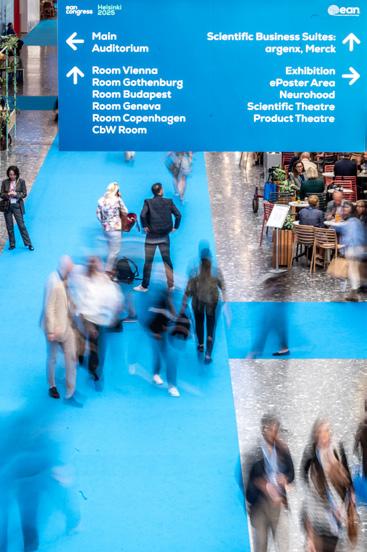

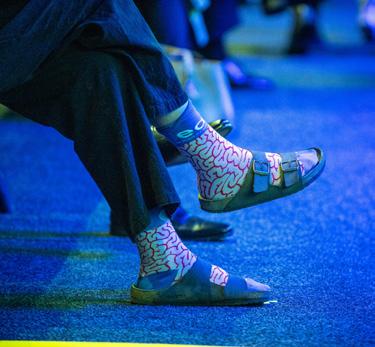
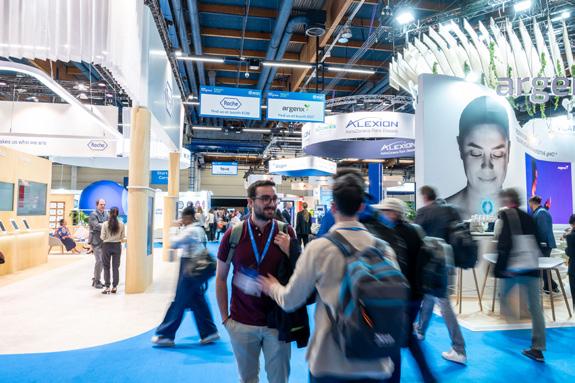

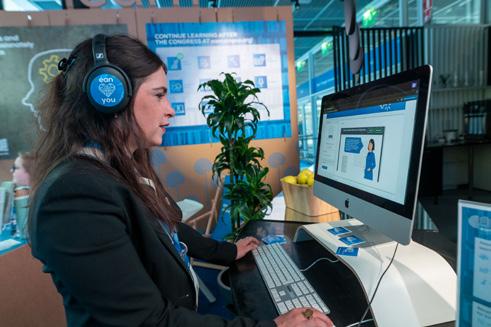


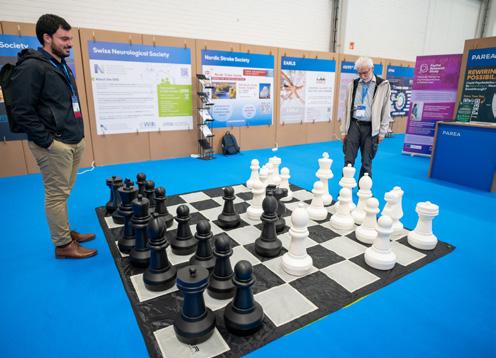
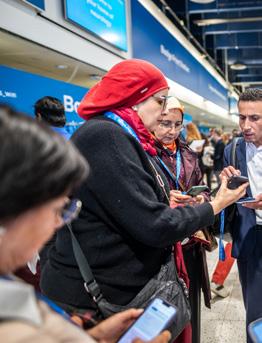

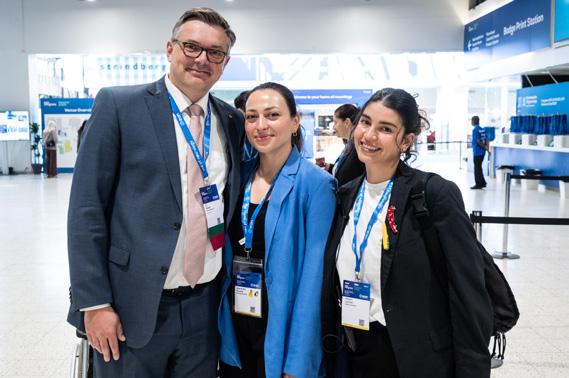









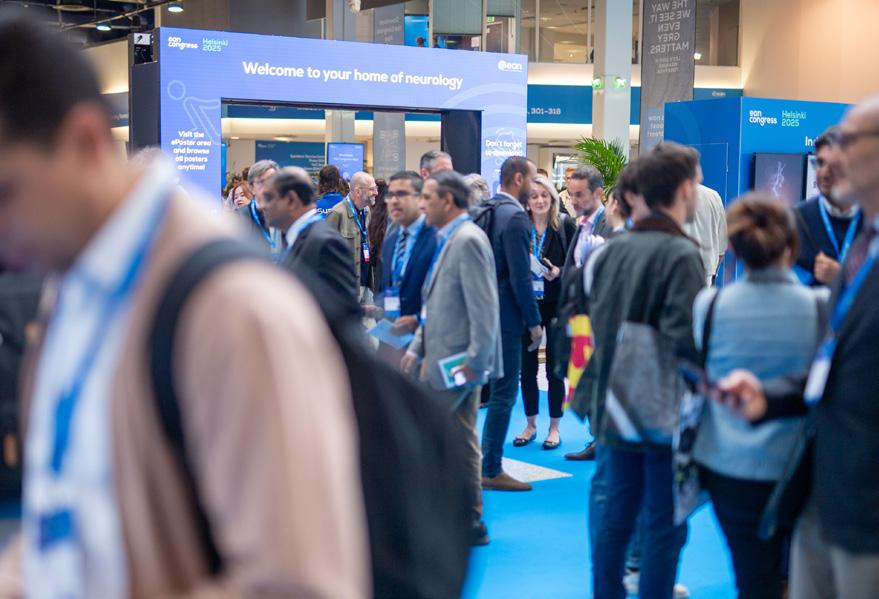
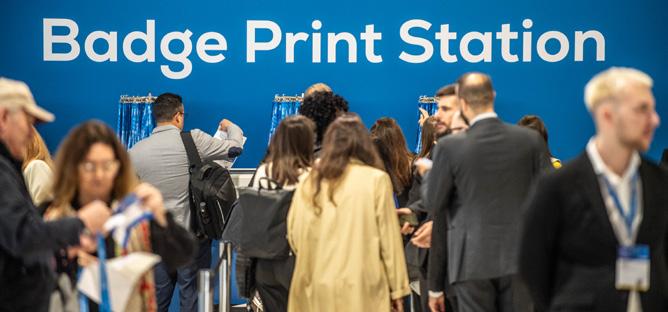
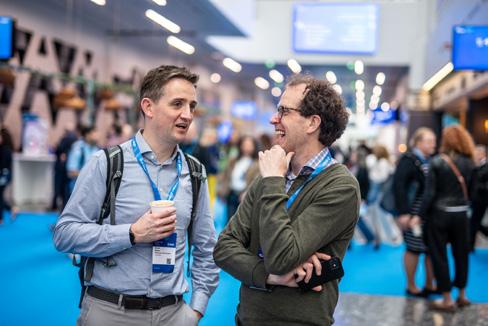
EAN CONGRESS REVIEW 2025
Managing Editor: Simon Lee
Associate Editors: Michael Crean, Elisabeth Starkl
Editorial Assistants: Selenge Batdelger, Linda Pecaj, Diana Schuler
Contributing Writers: Isabella Colonna, Hugo Hermantin, Kathrin Jehle, Simon Lee, Alicia Gonzalez Martinez, Simone Salemme, Irene Scala, Irina Vlad
Photographer: Andrew Rinkhy
Portrait Photographer: Julia Dragosits
Congress Key Visual & Design: Selenge Batdelger
EAN Congress Review Design & Concept: mattweis GmbH
Advertising: industry@ean.org
Published July 2025 | © 2025 European Academy of Neurology, Breite Gasse 4/7, 1070 Vienna, Austria
The final day of the EAN 2025 Congress in Helsinki culminated in the Highlights & Breaking News session, a celebration of scientific advances, recognition of outstanding contributions, and a forward-looking discussion on the future of neurological research and collaboration.
EA N President Elena Moro opened the session with a warm greeting, stating, “In Italian we say ‘pochi ma buoni’… we are few, but we are the strongest and the best,” and praising the traditional closing session as the most important part of the congress. Moro then handed over to Alicia Gonzalez Martinez, incoming Chair of the Residents & Research Fellows Section, to introduce the winners of the EA N Tournament.
Roger Collet Vidiella, winner of the Basic category, presented his team’s pioneering study using large-scale proteomics in Guillain-Barré Syndrome ( GB S), which identified multiple proteins and biological pathways in patients’ blood associated with GB S, highlighting SA A1 as a potential biomarker, pending further validation.
In the Clinical category, Giulia Di Rauso examined whether Parkinson’s disease (PD) patients with pathogenic variants in the LR RK2 gene had a higher prevalence of malignancies. Her study found that PD patients with mutated variants indeed had a significantly higher incidence of cancer, suggesting that early malignancy screening could enhance care for this patient group.
Next, EA N Programme Committee Chair Irena Rektorová introduced five standout topics from the Congress –dementia, headache, movement disorders, cerebrovascular diseases, and neuromuscular diseases – each presented by an EA N Scientific Panel co-chair.



Svetlana Tomic began with dementia, focusing heavily on Alzheimer’s disease. Noteworthy studies included the triglyceride-glucose index as a predictor of cognitive decline, a negative correlation between CSF synaptic biomarkers and disease duration, and links between astrocytic biomarkers and blood-brain barrier permeability.
Patricia Pozo-Rosich covered advances in headache research, especially the role of neuropeptides beyond migraine. Presentations on PACA P in cluster headache and CG RP in intracranial hypertension were highlighted, alongside promising data on GL P-1R agonists and a European multicenter study evaluating anti- CG RP monoclonal antibodies.
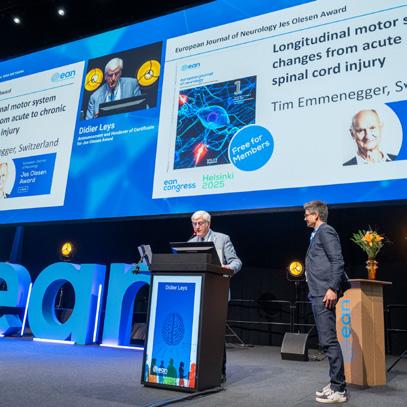


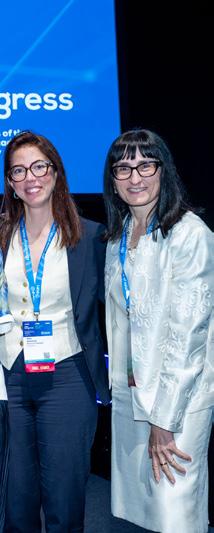


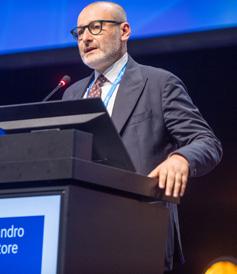

*Available to EAN members only. Please sign into your myEAN account to view.
Alessandro Tessitore addressed movement disorders, spotlighting genetics, biomarkers, and therapies for Parkinson’s, myoclonus, and related conditions. With over 70 abstracts submitted, highlights included research on adaptive deep brain stimulation, real-world treatment outcomes, and the increasing role of biomarkers in personalised care.
In cerebrovascular diseases, Thomas Clement Truelsen discussed the growing interest in cerebral amyloid angiopathy ( CA A), its overlap with Alzheimer’s disease, and how CS F biomarkers might help identify non-haemorrhagic CA A cases. He also mentioned a joint symposium with the European Stroke Organisation, including a meta-analysis on alteplase use and studies on left atrial appendage occlusion in atrial fibrillation patients.
Massimiliano Filosto presented updates in neuromuscular diseases, particularly in Myasthenia Gravis. He highlighted promising trials of BC MA/CD19 therapies and the use of CA R T cells, gene therapy, and enzyme replacement. He emphasised the emerging role of AI and advanced neuroimaging in AL S and FT D as transformative tools for diagnosis and monitoring.
The inaugural Jes Olesen Award was presented by Didier Leys to Tim Max Emmenegger for his groundbreaking paper on ‘Longitudinal motor system changes from acute to chronic spinal cord injury’. Emmenegger’s lecture detailed MR I studies showing how lesions evolve over time and how tissue bridge width
correlates with neurodegeneration. His work provided evidence of remote degenerative processes that persist well beyond the acute phase, with implications for future therapeutic interventions.
Elena Moro returned to the stage to thank the EA N Office, Board, Programme Committee, and all contributors for their role in making the congress a success. She reaffirmed EA N’s commitment to sustainability and international collaboration: “Wherever you come from, we come”.
Andreas Kleinschmidt then announced Geneva as the host city for EA N 2026, praising its accessibility, role in global health diplomacy, and strong scientific heritage. With major institutions like the WH O and International Red Cross headquartered there, Geneva promises to continue the momentum from Helsinki.
The session closed on a heartfelt note, with Moro, Rektorová, and Alicia Gonzalez Martinez expressing gratitude and pride in the EA N community’s growth and spirit. They encouraged continued collaboration to advance brain health initiatives across Europe and beyond.
With 6,383 participants onsite and over 1,906 online, the 2025 EA N Congress stood as a testament to the strength, diversity, and shared purpose of the global neurology community.
Watch this session on our virtual congress platform*
The annual EAN BrainChallenge quiz took place for the 8th time this year on Sunday afternoon and brought an entertaining and educational competition to the stage of the Main Auditorium. Team International competed against Team Hosting Countries, and the audience tested their knowledge via interactive voting.
Twelve cases were chosen for this year’s show, and after each question was solved, a short educational explanation was given by the moderators, allowing everybody to enhance their knowledge
Questions at different difficulty levels were divided into three categories:
‘Where have I lost my mind?’
‘ I cannot talk, I cannot hear’
‘Not everything is forever’
For the first six questions, teams were given multiple-choice questions, while in the second part, they had to answer open questions as fast as possible by hitting the buzzer first.
This year, the international team competed against a team from the co-hosting countries (Spain, Lithuania, Latvia, Estonia), and the show was guided by our three fantastic moderators: Margitta Seeck (Switzerland), Adolfo Mazzeo (Italy) and Conny Lee (Austria).



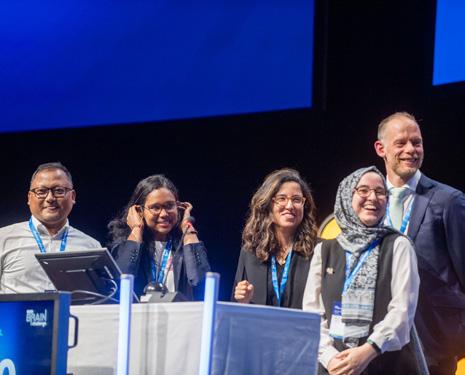
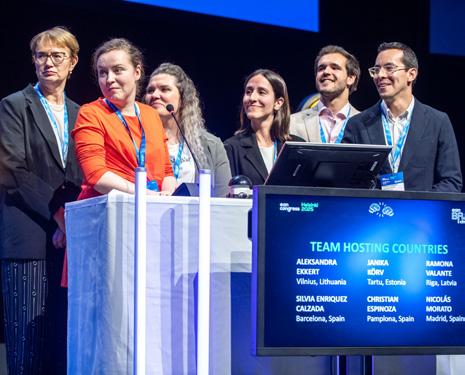

Lakshya J. Basumatary (India), Rick Helmich (The Netherlands), Merve Aktan Süzgün (Austria), Nesrine Kouki (France), Marianna da Silva Rafael Flörkemeier (Germany)

Aleksandra Ekkert (Lithuania), Janika Körv (Estonia), Ramona Valante (Latvia), Silvia Enriquez Calzada (Spain), Christian Espinoza (Spain), Nicolás Morato (Spain)
After an exciting competition, Team International took the win; however, both teams and the audience gave a great performance! Congratulations to Team International –and thank you all for taking part!
Thanks must go to all EAN Scientific Panels, who submitted cases for the EAN Brain Challenge 2025:
Adnan Mujanović, Scientific Panel on Stroke
Alberto Picca, Scientific Panel on Neuro-oncology
Alessandro Tessitore, Scientific Panel on Movement Disorders
Elisa Canu, Scientific Panel on Higher Cortical Functions
Jacopo Pasquini, Scientific Panel on Neuroimaging
Laura Kennelly, Scientific Panel on Stroke
Marta Olivé-Gadea, Scientific Panel on Stroke
Michelangelo Mancuso, Coordinating Panel on Rare Neurological Diseases
Raffaele Dubbioso, Scientific Panel on ALS
Gianmaria Senerchia, Scientific Panel on ALS
Simone Braca, Scientific Panel on Headache
Sonja Hochmeister, Scientific Panel on Neurocritical care
Theodoros Mavridis, Scientific Panel on Stroke
Veronica Cabreira, Coordinating Panel on Functional Neurological Disorders
Thank you all for contributing to and participating in the 2025 edition of our popular quiz show!
The EAN gratefully acknowledges the support and commitment of our industry partners for the EAN Congress 2025
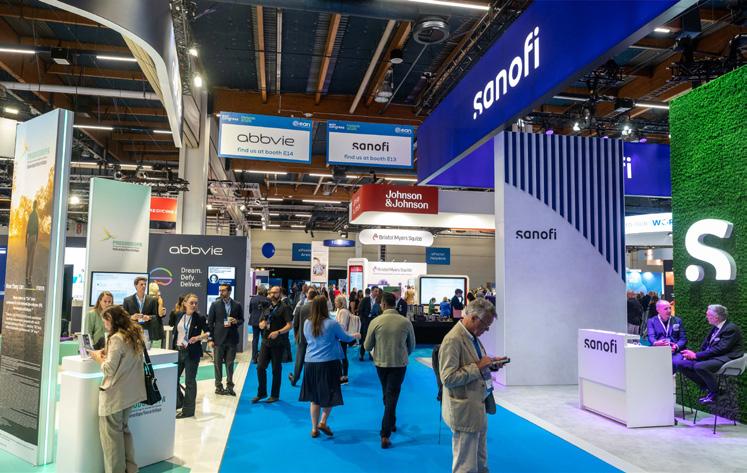
A special thank you goes to
Premium Sponsors

Major Sponsors


Our onsite exhibition at the EAN Congress 2025 featured some of the world’s top pharmaceutical and medical technology companies, spread out across 2,594 m 2 of space at the Messukeskus, giving attendees the chance to catch up with the latest industry developments and innovations direct from the source. A great range of industry sessions also took place onsite in Helsinki and streamed live via the Virtual Congress Platform, offering congress participants a chance to take a deep dive into our partners’ data, research and developments. Registered congress participants with EAN membership can still access many industry sessions via our Virtual Congress Platform. Just click the link below!
Browse Industry Sessions on our virtual congress platform*

Top Sponsors


Contributors
Sponsors & Exhibitors





FROM COUNTRIES
SCIENCE SPREAD ALL OVER THE WORLD: PARTICIPANTS INDUSTRY PARTNERS
INVITED SPEAKERS 405
2,251
SUBMITTED ABSTRACTS
2,594 EXHIBITION
95 ONSITE EXHIBITORS INCLUDING
41 NEUROHOOD EXHIBITORS
5 START-UP EXHIBITORS
12,058
TOTAL ONLINE LIVE VIEWING TIME IN HOURS
10,200
2,152
ACCEPTED ABSTRACTS
6,383 ONSITE 1,906 VIRTUAL
PARTICIPANTS SESSION ROOMS 15
22,724
302 SESSIONS MORE THAN CUPS OF COFFEE m2
ONLINE LIVE VIEWERS IN ALL SESSIONS COMBINED
2,890
AVERAGE CALORIES BURNED BY ONE OPERATIONAL STAFF MEMBER PER DAY
